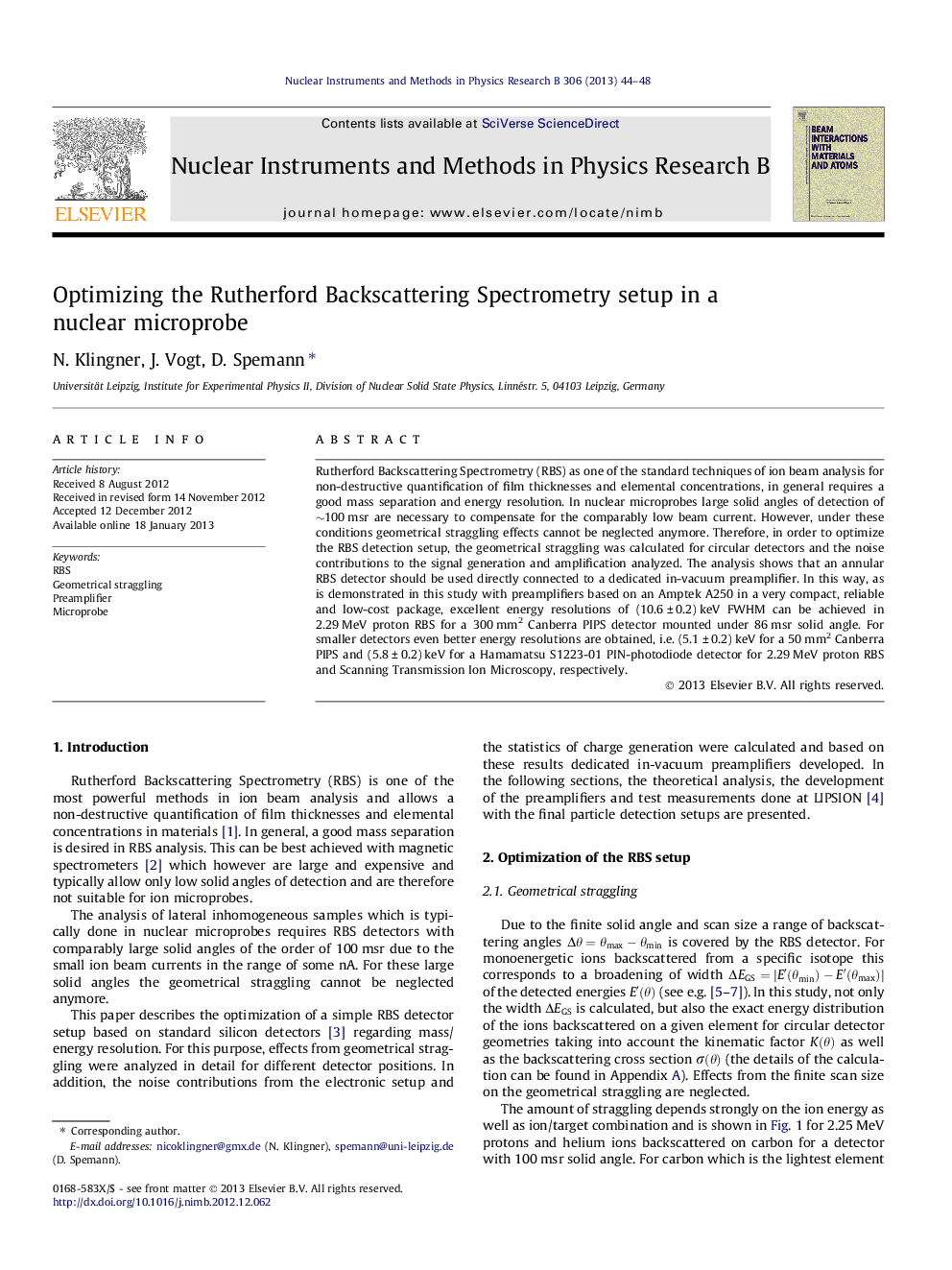| Article ID | Journal | Published Year | Pages | File Type |
|---|---|---|---|---|
| 8042583 | Nuclear Instruments and Methods in Physics Research Section B: Beam Interactions with Materials and Atoms | 2013 | 5 Pages |
Abstract
Rutherford Backscattering Spectrometry (RBS) as one of the standard techniques of ion beam analysis for non-destructive quantification of film thicknesses and elemental concentrations, in general requires a good mass separation and energy resolution. In nuclear microprobes large solid angles of detection of â¼100 msr are necessary to compensate for the comparably low beam current. However, under these conditions geometrical straggling effects cannot be neglected anymore. Therefore, in order to optimize the RBS detection setup, the geometrical straggling was calculated for circular detectors and the noise contributions to the signal generation and amplification analyzed. The analysis shows that an annular RBS detector should be used directly connected to a dedicated in-vacuum preamplifier. In this way, as is demonstrated in this study with preamplifiers based on an Amptek A250 in a very compact, reliable and low-cost package, excellent energy resolutions of (10.6 ± 0.2) keV FWHM can be achieved in 2.29 MeV proton RBS for a 300 mm2 Canberra PIPS detector mounted under 86 msr solid angle. For smaller detectors even better energy resolutions are obtained, i.e. (5.1 ± 0.2) keV for a 50 mm2 Canberra PIPS and (5.8 ± 0.2) keV for a Hamamatsu S1223-01 PIN-photodiode detector for 2.29 MeV proton RBS and Scanning Transmission Ion Microscopy, respectively.
Keywords
Related Topics
Physical Sciences and Engineering
Materials Science
Surfaces, Coatings and Films
Authors
N. Klingner, J. Vogt, D. Spemann,
